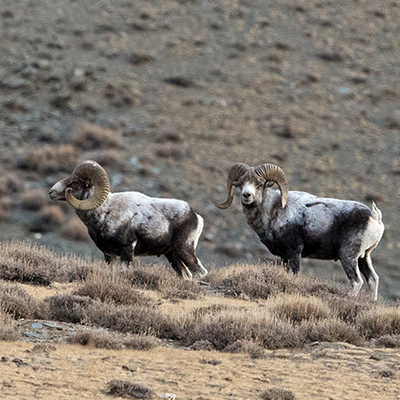
Wildlife Photography- Discover Mongolia's Wild Side
From Gobi Desert to Northern taiga, from the great steppes to Altai Mountains, the vast wilds of Mongolia give nature photographers an opportunity to find and capture some of the most iconic wildlife. Photographing Mongolia’s wildlife is not easy, but it is incredibly worth. Mongolian travel photographer Batzaya Choijiljav, has traveled and arranged photography tours and expeditions all over the country, especially in the National Parks and natural reserves for the last decade, spending countless days in hard weather conditions, dwelling in surviving shelter, traditional ger/yurt, traveling on reindeer and horse back, bumping on off the beaten paths and whatever else he needed to do to photograph from Mongolia’s unique nomadic lifestyle to its iconic wild animals. He has been created beautiful images of Mongolia, published on world class publications and on this Mongolian travel blog. Now we share his some of stunning wildlife photography works that help you to discover the wild side of Mongolia.
WILDLIFE PHOTOGRAPHY
Mongolia is home to the iconic wild animals including, 136 species of mammal, more than 500 species of birds, 76 species of fish, 8 types amphibians and 22 reptiles. Endangered mammals are the Gobi bear, Mongolian Argali sheep, ibex, snow leopards, wolves, antelopes, wild horses, gazelles and photographing them is the big game.
Photography of Mongolian Wild Sheep – Argali
Mongolia hosts the largest wild sheep in the world and it is the big challenging game to take pictures of them. We took several photographic journeys to some special areas with extensive scouting and found these rare species of beautiful creatures in the western Altai mountains and in the Gobi area in south Mongolia. There are actually two different types of argali sheep in Mongolia: High Altai Argali (Ovis ammon ammon) and the Gobi Argali (Ovis ammon darwini).

The wild mountain sheep is on The IUCN Red List of Threatened Species 2008 in the status of NT /Nearly Threatened/.

Altai Argali is the largest sheep in the world and carried the biggest horn off all wild species.

Mt.Turgen sub range of Altai Mountains in Uvs province of Mongolia- one of the main habitats of Altai Argali

According to the latest studies there were 19,700 wild sheep recorded in 2010, roaming in Altai, Knahgai Mounatain ranges and in the Gobi of Mongolia.

Wildlife photography into the fine art. Photographer Batzaya Choijiljav captures some of stunning wildlife pictures that bring a touch the exotic into our world.
Taking Picture Of The Wild Goat - Siberian Ibex
If you are a nature photographer, you would be a big fan of this wild creature. In the Yol Valley, Gobi Gurvan Saikhan National Park, we had opportunity to photograph them last September. Mongolia is also known as hosting Siberian Ibex (Capra sibirica) and there are two subspecies, Altai Ibex and Gobi Ibex living in the protected areas of the country. Siberian ibexes seek out lower slopes during the winter in search of food and the best time to see and photograph them is late septermber and early October. When snow is heavy, they have to paw away snow to reach the vegetation below.
Siberian ibexes are large and heavily built goats, although individual sizes vary greatly.

Males are between 88 and 110 cm (35 and 43 in) in shoulder height, and weigh between 60 and 130 kg (130 and 290 lb). Females are noticeably smaller, with heights between 67 and 92 cm (26 and 36 in), and weights between 34 and 56 kg (75 and 123 lb). Resource: www.inaturalist.org
Photographing Wild Horses in Hustain Nuruu National Park
Visiting and photographing Hustai National Park, 2 hours drive from the capital city, is a good chance to Watch & Photograph wild horses in their native environment. Our custom-designed wildlife photography program spends one to two days in Hustai NP, also give an opportunity to capture images of red deer, big horn sheep and grey wolf, if we're lucky.

Takhi wild horse of Mongolia, known as Przewalski’s horse. It differs from that of the domestic horse by an extra chromosome pair because of the fission of domestic horse chromosome 5 to produce the Przewalski’s horse chromosomes 23 and 24.
As a wild creature, the Takhi horse has an ability to change their color to suit the surrounding, it is the seasonal change and is not the same as domesticated horses.

Instinctively, the stallion looks to create his own group of mares or else wanders until he finds a group with its own leader. If the stallion finds a group of mares with its own leader, the stallion usually fights the other leader stallion of the group. The mares adjust and follow the victor.

Once extinct in the wild, they have since been kept and bred in captivity and are the last species of wild horse. has been reintroduced to its native habitat in Mongolia. And today they are roaming wildly in the Hustain Nuruu National Park, Takhin Tal Nature Reserve, and Khomiin Tal.
Photos of Mongolian Red Deer
While visiting Hustai NP, nature photographers should not miss to capture this beautiful animal. Red deer (Cervus elaphus), are also found in Khovsgol, Khangai, Khentii, Ikh Hyangan, Mongolian Altai and Gobi Altai mountain ranges. Regionally, it is critically endangered species, so photographing the red deer in Mongolia is one of my favourite games.
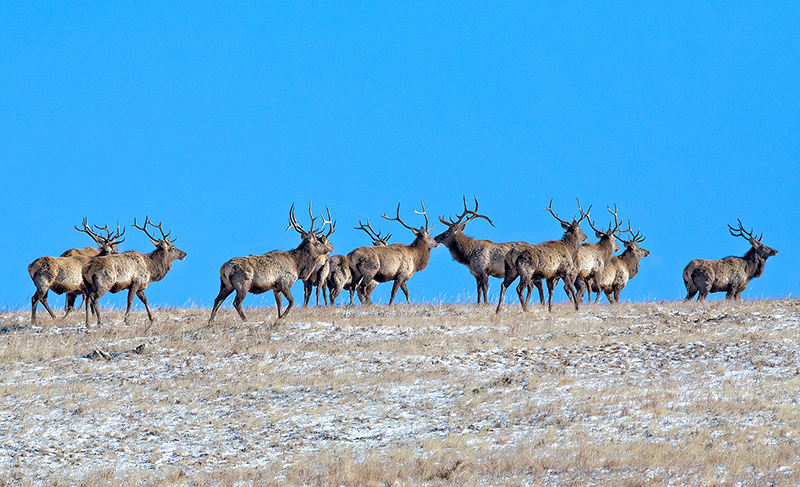
The red deer are separated by sex during the winter months, females were miles away in a different part of the park. These stags will drop their anglers in early spring.

The herd of female deer. The females and young form distinct groups away from the mature males except the rutting season.
This species is primarily targeted for its antler velvet, which is highly valued for traditional medicines and it is one the reasons to be declined the number of individuals.
Herds of Gazelle On East Mongolian Steppe
Mongolian gazelles (Procapra gutturosa), Formerly widely roaming in steppe and semi-desert habitats throughout Mongolia. In 2007, a mega-herd of a quarter of a million Mongolian white talied gazelles was seen gathering on the country's steppes, one of the world's last great wildernesses. There are also black tailed gazelle (Gazella subgutturosa), can be rarely seen and capture the images of them is one of the wildlife photography challenges.
The Mongolian white-tailed gazelle is still one of the most numerous large animals in the world, with the total population at about 1.5 million individuals.
The groups usually consists of 20-30 individuals in the summer, and 100 in the winter. However, herds up to 5,000 individuals are not unusual.

‘Black-tailed gazelle, which is included in the Red Book of Endangered Species.
PHOTOGRAPHING BIRDS OF MONGOLIA
Bird photography is an exciting photographic genre for me and it often be difficult and challenging and always needed to be practiced. Here I show you some images of birds taken in Mongolia that may tell why this is the most challenging photography. The photographer found there is a great diversity of birds in Mongolia, all with interesting habits, vibrant and varied colors.

Bearded vulture (Gypaetus barbatus), known as the Lammergeier, are rarely found in the high mountains in the Gobi desert and Altai Mountains. The only living bird species that specializes in feeding on bone marrow and has learned to crack bones too large to be swallowed by carrying them in flight.

Siberian Crane is one of the most threatened of the 15 cranes species remaining on Earth. There are few pictures of these endangered Siberian Cranes in the wild in Mongolia because of its rarity.

Pied avocet (Recurvirostra avosetta), a migratory species are found in north east Mongolia. According to the study combining genetics and morphology showed that it was the most divergent species in the genus.

The white-naped crane is a large species of crane, standing 112-125cm in height, and weighing about 5.5kg, is found in found near several rivers in eastern part of Mongolia.

The grey heron (Ardea cinerea) is a large bird, standing up to 100 cm (39 in) tall and measuring 84–102 cm (33–40 in) long with a 155–195 cm (61–77 in) wingspan, are seen in around lakes, rivers, ponds, marshes.
“Bird Mongolia” - Part of us, our active birding team has been arranging bird photography trips in Mongolia. Bird Mongolia offers all-inclusive package tours for birders, twitches and photographers.
Mongolia is one of the last wild places on earth, about 60 families, making up 513 species of birds are recorded in Mongolia. The diverse ecosystems make Mongolia a unique destination for bird lovers. If you are interested, please visit our Bird Mongolia and Explore all about the birding in Mongolia!
THE NEXT BIG CHALLENGE

The challenge to capture great images of wildlife and nature gives us a sense of accomplishment and also provides excitement, enjoyment and relaxation for us. Being out in nature gives us a time and place to meditate on all the beautiful creations that the planet earth provode us. So This is our starting point of capturing magnificent creatures on earth. The next wild photographic adventures await us in one of the most sparsely populated but rich in wildlife diversity country - Mongolia. Let us meet later with the great news of our next big challenge soon.
Read More About Snow Leopard Photo Adventure in West Mongolia
Based on those adventure and photography travel experiences, we arrange Snow Leopard Photo Adventure in Mongolia in last years. If you are keen to take this Rare Cat’s picture, then register the next trip. Contact at info@toursmongolia.com









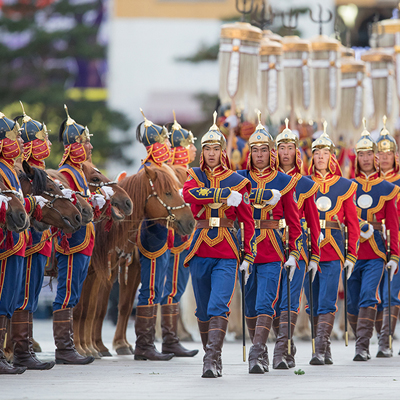
.jpg)



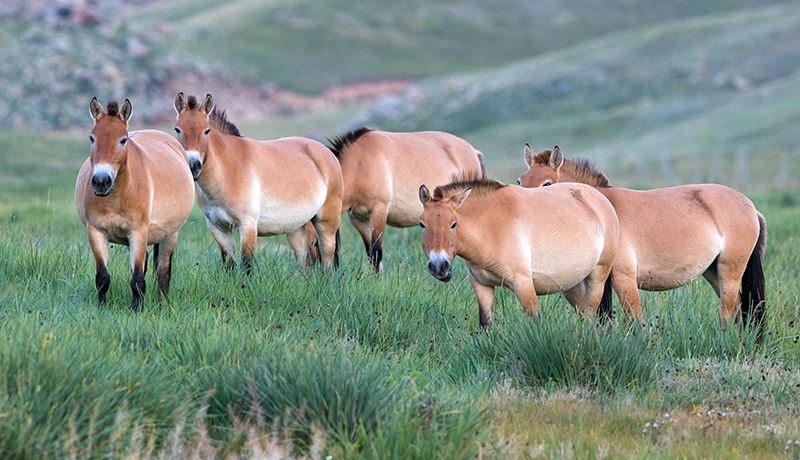



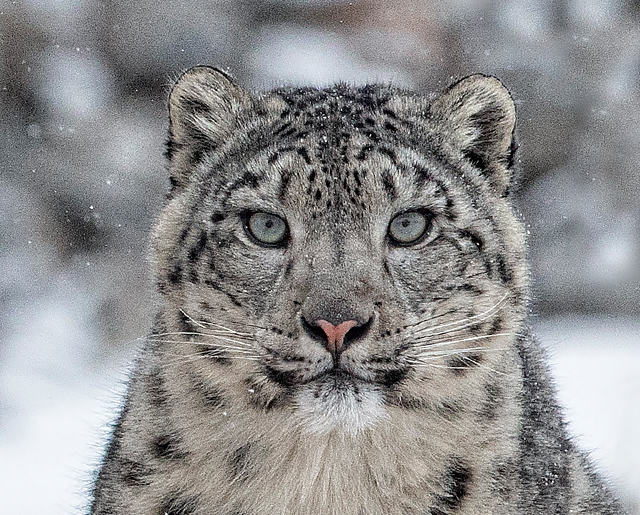








_BLOG.jpg)








